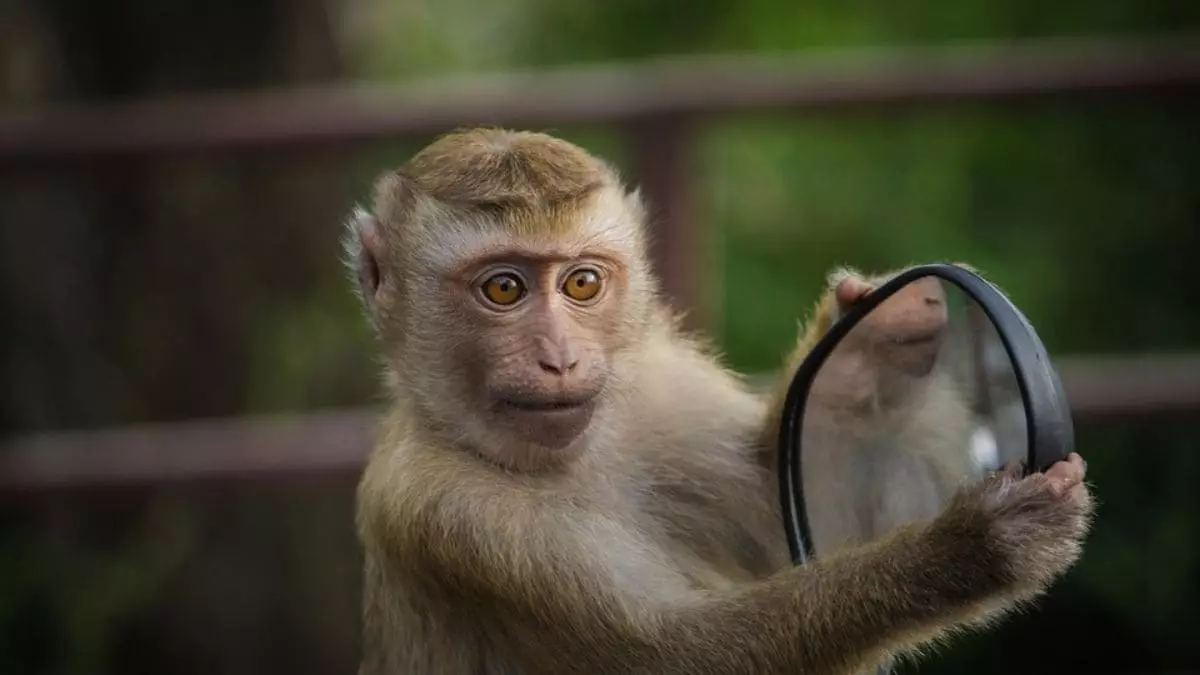The exploration of self-awareness in animals has long intrigued researchers, leading to significant debates about cognitive capabilities across different species. The recent findings on chacma baboons, particularly their behavior when confronted with mirrors, add another layer to this ongoing discussion. Unlike certain primate species that have demonstrated self-recognition abilities, these baboons appear to lack such awareness, prompting further inquiries into the evolutionary and ecological underpinnings of this cognitive trait.
The Mirror Test: A Tool for Recognition?
Central to studies of animal self-awareness is the mirror test, a method introduced to measure whether an animal can recognize its own reflection. In this study, researchers set up large mirrors in Namibia’s Tsaobis Nature Park, a location frequently visited by two troops of chacma baboons (Papio ursinus). The aim was to observe whether these creatures could connect their reflection with their identities. Despite their evident curiosity about the mirrors, the baboons’ responses indicated a significant disconnect from self-recognition. This reflects a broader pattern noted in non-ape primates, reinforcing the idea that self-awareness might not be universally present in all intelligent species.
Over five months, researchers systematically tested the baboons’ reactions when a laser dot was projected onto their faces versus their limbs. When the laser was directed onto visible body parts such as arms or legs, 64% of the 91 baboons touched the marked spots, which suggests a degree of physical self-awareness. However, this did not translate when the laser dot appeared on their faces. Out of the 51 baboons that looked into the mirrors with marks on their faces, a mere one showed a response. Notably, many baboons seemingly recognized the mark but chose not to interact with their reflection directly. This stark contrast raises critical questions about the cognitive framework that informs self-perception in these animals.
Experts like Alecia Carter from University College London emphasize that self-awareness is not merely a straightforward trait but a complex tapestry of cognitive abilities influenced by various factors. The baboons’ responses—or lack thereof—suggest that self-awareness, particularly as observed through mirror reflections, may not be an innate quality but rather a developmental milestone influenced by social and environmental contexts. Comparatively, other species, such as chimpanzees and dolphins, have demonstrated marked self-recognition capabilities. Such differences in cognitive processing systems among primates could be rooted in the varying ecological and social pressures they face.
Interestingly, the findings challenge the assumption that self-recognition is a cornerstone of any species’ survival. As Carter noted, chacma baboons thrive in their social structures and environmental contexts without requiring an ability to recognize their reflections. This observation aligns with discussions by researchers like psychologist Lindsay Murray, who posits that self-awareness may exist along a continuum rather than as a binary trait. Thus, while humans may develop this trait through gradual maturation—only two-thirds of children recognizing themselves in mirrors by age two—other species may prioritize different forms of cognitive skills essential for their survival.
The results of this study offer valuable insights for future research into animal cognition. By examining the specific behaviors of baboons and contrasting them with those of other species, researchers can delve deeper into the factors that foster or inhibit self-awareness. Understanding these dynamics not only enriches our knowledge of non-human intelligence but may also reveal larger truths about the evolutionary trajectories that different species have undertaken.
In sum, the baboon mirror study not only informs us of the cognitive limitations these primates face but also invites us to reconsider what self-awareness means across the animal kingdom. Far from being a prerequisite for life, self-recognition may simply be one of many tools in the vast toolkit of intelligence that various species exploit to navigate their worlds.


Leave a Reply